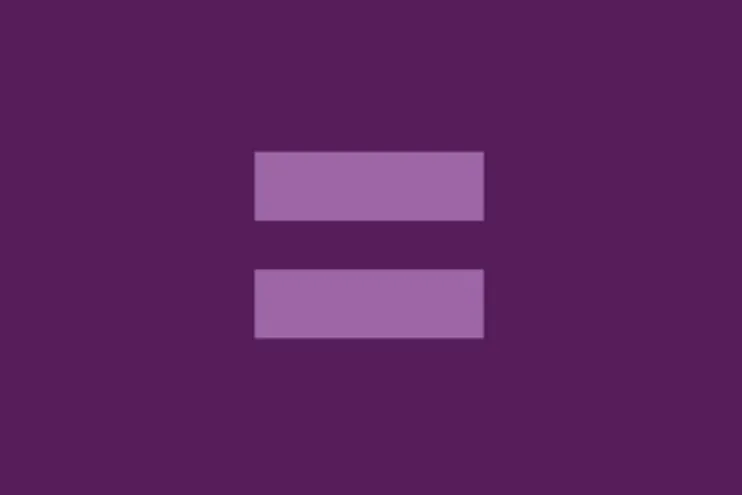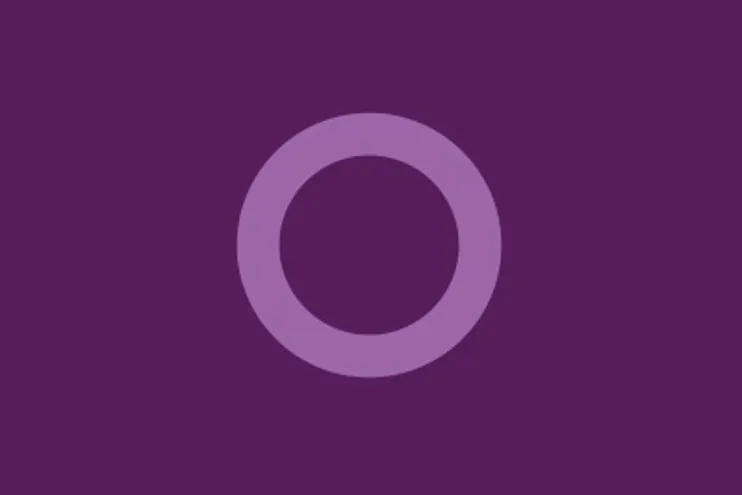Driving real change - our Equity, Diversity and Inclusion Strategy
At the IET, equity, diversity and inclusion (EDI) are core to our values and beliefs and are embedded throughout our strategy.
Together, we're building an inclusive culture that inspires, engages and celebrates the diversity of our members, volunteers, colleagues, and the wider engineering and technology community.
We want everyone to fulfil their potential and feel they belong in engineering and technology.
“It is vital that the IET creates an environment where all of our members, volunteers and colleagues feel valued and can succeed.
We know that the Engineering and Technology sectors are not as diverse and inclusive as they should be and as one of the largest Professional Engineering Institutions, we have a responsibility and opportunity to change that.
By improving EDI holistically, we will help ensure that everyone feels they belong, can participate in and benefit from engineering a better world.”
Ed Almond, Chief Executive and Secretary

About the IET
We are the IET and we inspire, inform and influence the global engineering community to engineer a better world. As a diverse home across engineering and technology, we share knowledge that helps make better sense of the world to solve the challenges that matter. That’s why we are uniquely placed to champion inclusive engineering.
Introduction
This EDI strategy supports our objectives, vision, mission, values and behaviours. It demonstrates our commitment to providing equal opportunity for all and highlights that we value everybody associated with us.
Our vision
As a registered charity, our purpose is to enable the engineering and research community to better serve society, and this is captured in our vision statement:
Working together to engineer a better world.
Our EDI strategy contributes to that by:
‘delivering equity, diversity and inclusion across the IET and in the profession we represent, we will advance excellence in engineering a better world.’
Our mission
To inspire, inform and influence the global engineering community, supporting technology innovation to meet the needs of society.’
Our EDI strategy contributes to that by:
‘Inspiring, informing and influencing all members, volunteers, colleagues, organisations and the wider engineering and technology community with a focus on improving EDI within our workplaces, as a PEI and across the sector.’
This EDI strategy does have a UK focus but considers the global nature of the IET and the engineering and technology community as well as our ambition to be a truly global organisation. We collaborate with and learn from our global members and volunteers on cultural differences and nuances in EDI across the world.
EDI runs throughout our organisational strategy and is a key pillar within our IET People Strategy.
Why?
Engineering and technology are for everyone.
It's not only morally right to ensure that everyone has equal opportunity to be involved and succeed, but to improve our world, advance excellence and solve complex global challenges we need to include a diversity of talent and knowledge.
Diverse perspectives and inputs will improve individual, societal and economic outcomes for the engineering sector. To address the skills shortage threatening our industry we must support equal opportunity for all and be a truly inclusive community.
Who?
Key audiences of our EDI strategy include:
- our members
- our volunteers
- our colleagues
- our partner organisations
- and the wider engineering and technology community.
This includes practitioners, academia, industry and society.
Definitions
Equality Act 2010:
In the UK* the concept of equality is primarily centred on complying with the UK Equality Act 2010.
The Act makes it unlawful to discriminate, harass or victimise someone because they have or are perceived to have a ‘protected characteristic’ or are associated with someone who has a protected characteristic. All people in the UK are protected by this legislation.
*this strategy considers the global nature of the IET and the engineering and technology community as well as our ambition to become a truly global organisation by 2030.
Protected characteristics:
The protected characteristics set out in the UK* Equality Act 2010 include age, disability, gender reassignment, marriage and civil partnership, pregnancy and maternity, race, religion or belief, sex and sexual orientation.
*this strategy considers diversity beyond the protected characteristics in the UK’s Equality Act 2010.
EDI glossary
Further definitions are included in our EDI glossary:

As a global organisation, we recognise that within our member, volunteer and colleague base, a wide range of views and beliefs are held.
In some instances, these beliefs may conflict with those of others within the IET community.
The IET will always strive to ensure everyone has the opportunity to think freely and speak openly about their views, on the condition that it is done respectfully and does not discriminate against others.
Current areas of focus
Through our EDI work we reflect the values of the IET:
We treat everyone with integrity and respect, continually striving for excellence in all our activities and use the power of teamwork to deliver value.
A key area is diversity data collection and monitoring - understanding data is key to improving diversity. We collect, collate, and analyse appropriate diversity data to ensure an evidence-driven approach to our work. The insights we gain also help us to better understand which approaches will not work.
We will continue to learn and to further develop trust in the self-reporting of diversity data so that we can understand as much as possible from our results, gain insights and take appropriate actions where needed.
We understand the importance of considering EDI holistically and we consider intersectionality throughout all of our work.
People do not fit into neat categories and many of us are affected by many different aspects of EDI.
We understand that different circumstances and underrepresentation in multiple respects can have cumulative impacts on a person’s experience and additional barriers may be faced.
In the first two years of this strategy, we will primarily focus on two core areas, gender and disability, whilst maintaining progress in the remaining three focus areas, LGBTQ+, race and ethnicity and socioeconomic status.
Disability and gender have been prioritised to enable us to enact change sooner with the data, knowledge, resources and tools we have at our disposal. We will take our learning from these core areas and utilise this across our EDI work.
We recognise that some of our partners have the tools, resources and knowledge to enable great impact in other areas of EDI and so we will work with and alongside them where we identify this.
Collaboration is vital, by coming together we can achieve much more than striving for change individually with similar or at times competing priorities (see partnerships below).
As we progress, our focus areas will adapt and develop, and this strategy will be continually reviewed as our knowledge base grows. In time, our focus may shift to other important diversity characteristics such as, but not limited to, age and religion.
Another key area for us is ensuring our senior governance roles are accessible to volunteers from all backgrounds and experiences.
It is vital that diverse perspectives are included in decision making processes and that representation is achieved across our senior governance roles.
We will celebrate success and support our member, volunteers and partner organisations to communicate the benefits of EDI.
Core areas of focus:
Disability
Disabled people are underrepresented in STEM. Disabled engineers make up 13.6% compared to all other occupations combined at 18.0% (Engineering UK, 2023).
The UN defines disabled people as ‘those who have long-term physical, mental, intellectual or sensory impairments which in interaction with various barriers may hinder their full and effective participation in society on an equal basis with others’.
At the IET we embrace the social model of disability, which states that disability is not an individual characteristic inherent to a person, but instead a societal construct arising from the interaction of a person and the inaccessible environment and discrimination they encounter.
As an institution, we must ensure our processes, activities and events are accessible and inclusive of all disabled engineers and technologists. We have an opportunity to showcase disabled talent across our discipline.
As an employer, we must ensure inclusive access, retention and progression of all disabled staff.
Globally, we must help our members understand more about disability, encourage them to embrace others’ differences and promote work to provide accessible environments which allows everyone to be included and achieve their potential.
The United Nations Convention on the Rights of Persons with Disabilities (CRPD) ensures that duty bearers at all levels must meet their responsibilities and ensure disabled people are included in all design thinking.
Gender
Promoting gender diversity within the engineering and technology profession is key to broadening the talent pool and engaging with a large proportion of the population.
Only 16.9% of the UK Engineering and Technology workforce are women in comparison to 56% of other occupations (Engineering UK 2025). Women make up 17% of all first-degree entrants in all engineering and technology subjects (Engineering UK, 2021) despite making up 51% of the population (UK 2011 census).
As an institution, embracing gender diversity enhances collaboration and brings about the diversity of thought which leads to the innovation and creativity required for us to engineer a better world.
As an employer, we must harness and utilise all talents and ensure all colleagues can be their best and achieve their potential.
We must understand the global context of gender diversity and the ways in which improved gender diversity is achieved across the world.
As the home of WISE (Women into Science and Engineering) Campaign we support organisations with the tools and knowledge required to improve gender equity across the STEM sector.
Together we present a unique opportunity to drive faster progress in gender equity.
As the home of Young Woman Engineer of the Year we celebrate progress and highlight the continuing issue in our industry.
We will work with our powerful YWE alumnae to highlight the challenges and advocate for change.
Progress areas:
LGBTQ+
A survey conducted by the IET (2019) showed that over a quarter of respondents (29%) who identified as belonging to the LGBTQ+ community would never consider a career in the engineering profession for fear of discrimination.
As one of the largest and most influential professional engineering institutions (PEIs) in the world; the IET has a responsibility and opportunity to inspire, inform, influence, and promote engineering to everyone and ensure that no one fears discrimination within our community, and everyone can bring their whole selves to work.
We encourage all engineering organisations and other PEIs to do the same.
As an employer, we must ensure that everyone has equal opportunity to succeed, and demonstrate that workplace discrimination, exclusion, and barriers to career progression will not be tolerated.
On a global basis, we must not rely on generalised assumptions of acceptance or intolerance but model our IET behaviours, welcoming everyone to our community, whilst accepting cultural differences across the world.
Race and ethnicity
We stand together against all forms of racism and we expect our members, volunteers, and colleagues to do the same.
We know that 9.9% of those working in engineering occupations across all industries were from minority ethnic backgrounds, compared to 12.2% of those in non-engineering occupations.
This is despite 27% of engineering degree qualifiers being from minority ethnic backgrounds in 2018/19 (Engineering UK, 2020).
According to the IET’s 2021 Skills and Demand in Industry report, only 30% of organisations take action to attract racial minority groups into their workforce.
Promoting racial diversity within the engineering and technology profession will broaden the talent pool and ensure that we solve complex problems for all of society.
As an employer, we must ensure all our colleagues have the opportunity to succeed and feel a sense of belonging within our organisation.
We must improve our understanding of race and ethnicity data collection and monitoring on a global basis as well as cultural difference on an international scale.
Social mobility
21% of those working in engineering come from lower socio-economic backgrounds, in comparison to 29% of those in the wider workforce (Labour Force Survey, 2017).
There is also a greater disparity in progression to more senior roles for those from different socio-economic backgrounds (Bridging the Gap, 2022).
We have a responsibility and opportunity to engage with people from all socio-economic backgrounds across everything we do.
From a workforce perspective, it is important to recognise that traditional workplace structures don’t necessarily take into account the circumstances and experiences of individuals who come from a lower socio-economic background.
From a global perspective, we must seek to learn more about social mobility, the value of careers in engineering and technology and the progression they bring to societies and individuals.
Partnerships
Our work can be even more powerful when done in collaboration with others.
By maintaining key partnerships, identifying new partners, and sharing good practice we will extend the reach and influence of our EDI work.
By working with others and driving the development of cross-sector standards, we can begin to embed longer-term improvements.
Measuring success
Measuring success is key to knowing whether we are achieving our central aim of inspiring, informing, and influencing all colleagues, volunteers, members, organisations, and the wider engineering and technology community, especially within our focus areas.
A range of measures will enable us to monitor our success:
- capturing and monitoring diversity data across our membership, volunteers, colleagues and activities
- maintaining and improving diverse talent attraction and retention across the Institution
- engagement with a broad and diverse group of engineers and technologists measured through diversity data monitoring
- engagement with our content that promotes diverse talent and inclusivity through media tracking
- engagement and satisfaction levels of IET members and volunteers measured through feedback surveys
- engagement and satisfaction levels of IET colleagues measured through surveys
- evidence of improved career progression and/or retainment of underrepresented groups through surveys, feedback forms, focus group data
- growth of effective partnerships measured through stakeholder mapping, communication statistics, and outputs
- external accreditation, recognition and award for our successful and exemplary EDI practices
- improvement in all areas of the Royal Academy of Engineering and Science Council Equality, Diversity and Inclusion Progression Framework Tool.
Equality, Diversity and Inclusion Report
To read some of our recent achievements take a look at our EDI year in reviews.





